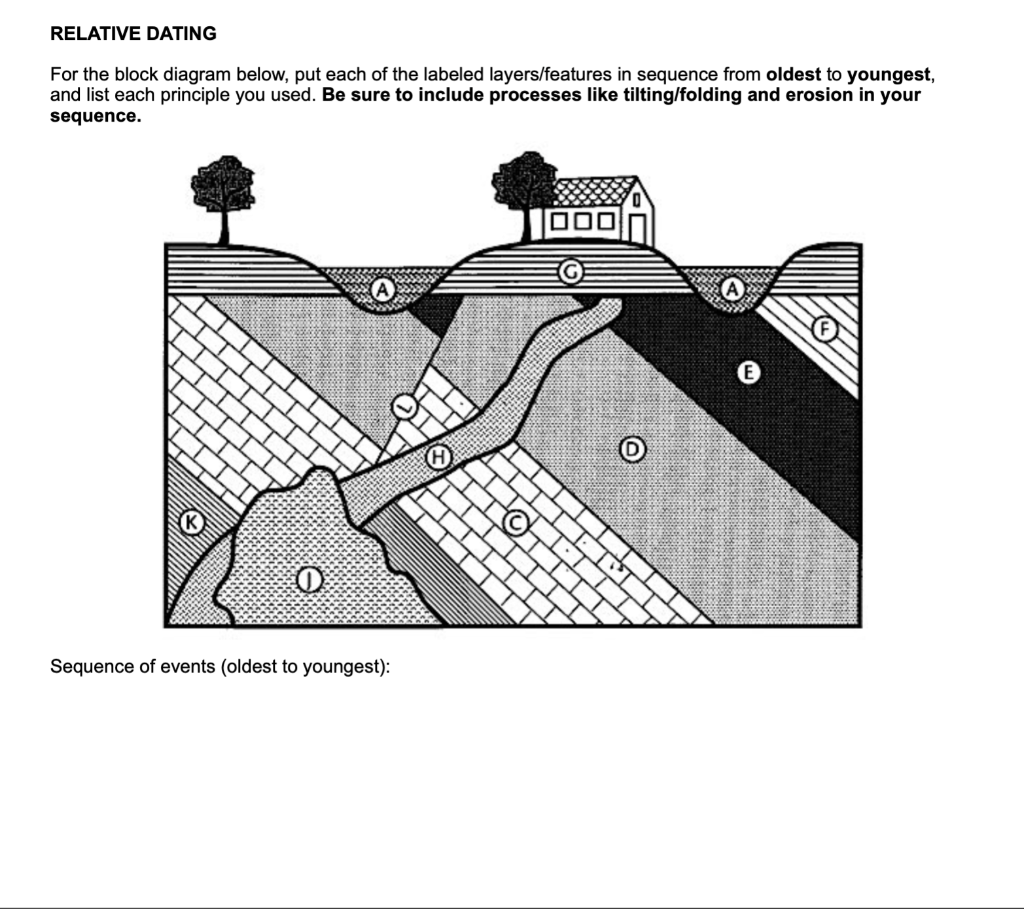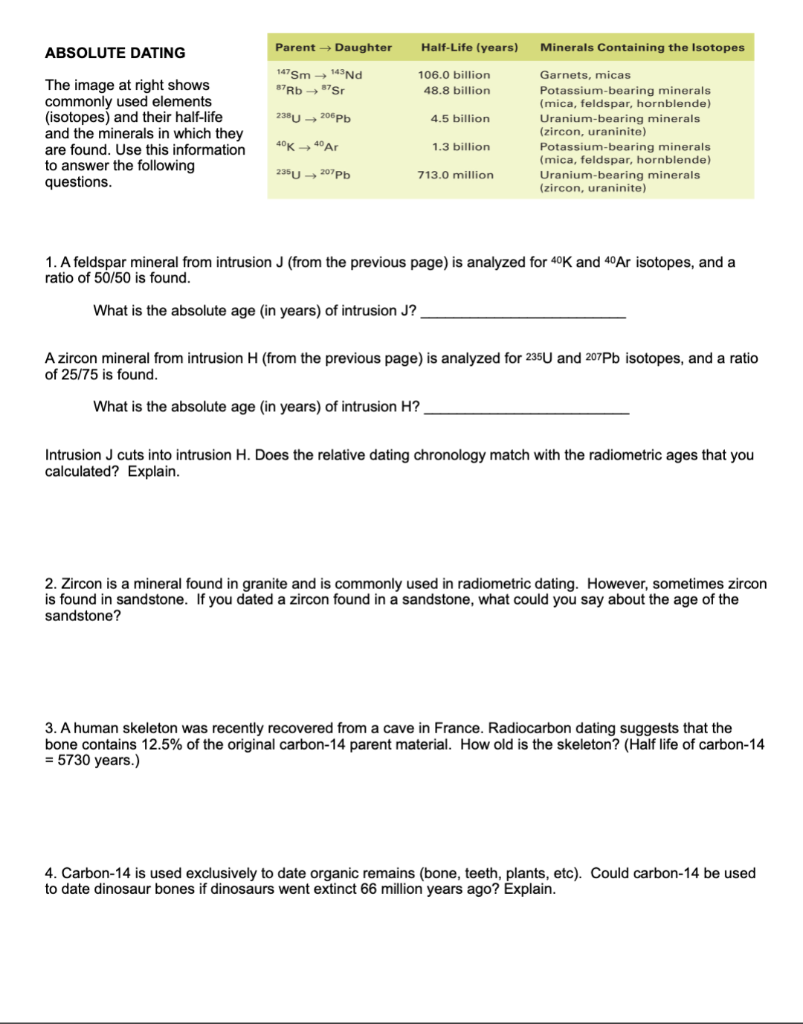Can you please help me answer all these questions???



RELATIVE DATING For the block diagram below, put each of the labeled layers/features in sequence from oldest to youngest, and list each principle you used. Be sure to include processes like tilting/folding and erosion in your sequence. Sequence of events (oldest to youngest): ABSOLUTE DATING The image at right shows commonly used elements (isotopes) and their half-life and the minerals in which they are found. Use this information to answer the following questions. 1. A feldspar mineral from intrusion J (from the previous page) is analyzed for 40K and 40Ar isotopes, and a ratio of 50/50 is found. What is the absolute age (in years) of intrusion J ? of 25/75 is found. What is the absolute age (in years) of intrusion H ? Intrusion J cuts into intrusion H. Does the relative dating chronology match with the radiometric ages that you calculated? Explain. 2. Zircon is a mineral found in granite and is commonly used in radiometric dating. However, sometimes zircon is found in sandstone. If you dated a zircon found in a sandstone, what could you say about the age of the sandstone? 3. A human skeleton was recently recovered from a cave in France. Radiocarbon dating suggests that the bone contains 12.5% of the original carbon-14 parent material. How old is the skeleton? (Half life of carbon-14 =5730 years.) 4. Carbon-14 is used exclusively to date organic remains (bone, teeth, plants, etc). Could carbon-14 be used to date dinosaur bones if dinosaurs went extinct 66 million years ago? Explain. 5. The image at right shows actual radiometric ages pulled from ash layers called bentonites (that contain a mineral called Sanidine) in Southern Utah. Many of these sedimentary layers contain fossil turtles, snails, and dinosaurs. There are two absolute ages: 75.02 and 75.96 million years. Do these dates match the relative dating story? Explain. Let's say you found a dinosaur bone in the layer marked with a star. What can and can't you say about the dinosaur's possible age? Extra Credit (5 points) The numbers on the left-hand side of the image above represent how thick (in meters) these sedimentary layers are. We can estimate that ash sample KDR-5 is at 90 meters and ash sample KBC-109 is at 420 meters. Knowing the ages of the two samples, calculate an average sedimentation rate (i.e., how fast these sediments accumulated). Convert your answer to mm/yr. Show your work









